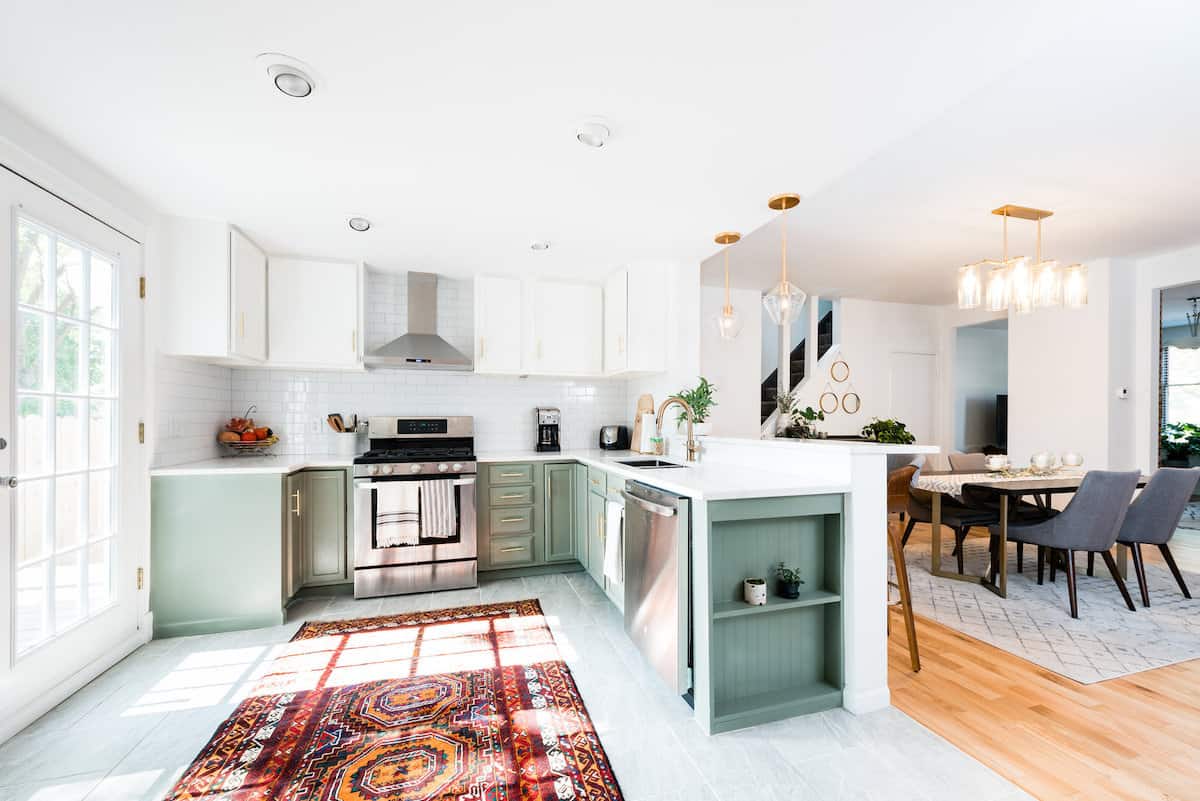
1. Set Clear Priorities
Identify Must-Haves vs. Nice-to-Haves
Before starting your remodeling project, list your priorities. Identify the features or changes that are essential (must-haves) and those that are desirable but not crucial (nice-to-haves). This distinction will help you focus your budget on the most important aspects of the project.
Focus on High-Impact Areas
Prioritize areas of your home that will have the most significant impact on value and functionality. Kitchens and bathrooms are often top priorities because they offer the highest return on investment. Enhancements like updated cabinetry, modern fixtures, and efficient layouts can significantly boost both usability and resale value.
2. Plan and Budget Wisely
Create a Detailed Budget
Develop a detailed budget that includes all potential costs, such as materials, labor, permits, and unexpected expenses. Be realistic about your financial limits and ensure that your budget aligns with your goals.
Set Aside a Contingency Fund
Unexpected issues can arise during remodeling, such as structural problems or hidden damage. Set aside a contingency fund, typically 10-20% of your budget, to cover unforeseen costs. This reserve ensures that you can handle surprises without derailing your project.
3. Choose Cost-Effective Materials and Finishes
Explore Budget-Friendly Alternatives
High-quality materials don’t always have to be the most expensive. Research budget-friendly alternatives that offer durability and aesthetics. For example, laminate countertops can mimic the look of natural stone at a fraction of the cost, and luxury vinyl plank flooring can provide the appearance of hardwood.
Mix High and Low-End Finishes
Strategically mixing high-end and more affordable finishes can create a balanced and stylish look without breaking the bank. For instance, splurge on a statement piece like a high-quality kitchen backsplash, while choosing more budget-friendly options for cabinetry and hardware.
4. DIY Where Possible
Take on Small Projects Yourself
If you have the skills and time, consider taking on some aspects of the project yourself. DIY tasks like painting, installing light fixtures, or landscaping can save labor costs. However, be realistic about your abilities and avoid taking on tasks that require professional expertise, such as electrical or plumbing work.
Prepare the Space
Prepare the space for contractors by clearing out furniture, removing old fixtures, or even doing minor demolition work. These preparatory steps can reduce labor costs and expedite the project’s timeline.
5. Hire the Right Professionals
Get Multiple Quotes
Obtain quotes from multiple contractors to compare prices and services. Look for experienced professionals with good reputations and positive reviews. Don’t automatically choose the lowest bid; consider the quality of work and materials offered.
Negotiate Contracts
Negotiate terms with your contractor, including payment schedules, project timelines, and specific deliverables. A clear, detailed contract helps prevent misunderstandings and ensures that both parties have a shared understanding of the project’s scope and costs.
6. Plan for Efficiency
Reuse and Repurpose
Consider reusing or repurposing existing materials and fixtures where possible. For example, refacing or repainting kitchen cabinets instead of replacing them entirely can save money. Similarly, refinishing existing hardwood floors can be more cost-effective than installing new flooring.
Optimize Layouts Without Major Structural Changes
If your remodeling project involves changing layouts, try to work within the existing structure. Moving plumbing, electrical, or load-bearing walls can significantly increase costs. Instead, find creative solutions to optimize the space, such as using modular furniture or reconfiguring existing cabinetry.
7. Time Your Purchases
Shop Sales and Discounts
Take advantage of sales, discounts, and clearance events to purchase materials and fixtures. Home improvement stores often have sales around major holidays, and online retailers may offer deals that can significantly reduce costs.
Plan for Off-Season Work
Scheduling your project during the off-season can sometimes result in lower labor costs, as contractors may have more availability and offer competitive pricing. Additionally, purchasing materials during off-peak times can lead to cost savings.
8. Stay Involved and Communicate
Regularly Monitor Progress
Stay actively involved in the remodeling process by regularly visiting the site and communicating with your contractor. This involvement helps ensure that the project stays on track and within budget. Address any concerns or deviations from the plan promptly.
Be Open to Adjustments
Flexibility is key in remodeling. Be open to adjustments or alternative solutions if unexpected issues arise. For example, if a specific material becomes unavailable, your contractor may suggest an alternative that fits within your budget and design preferences.
Conclusion
Maximizing your budget for a home remodeling project requires careful planning, smart decision-making, and active involvement. By setting clear priorities, choosing cost-effective materials, and hiring the right professionals, you can achieve a successful renovation that enhances your living space and adds value to your property. Remember, a well-executed remodeling project is not just about spending money wisely—it’s about creating a home that reflects your vision and meets your needs.